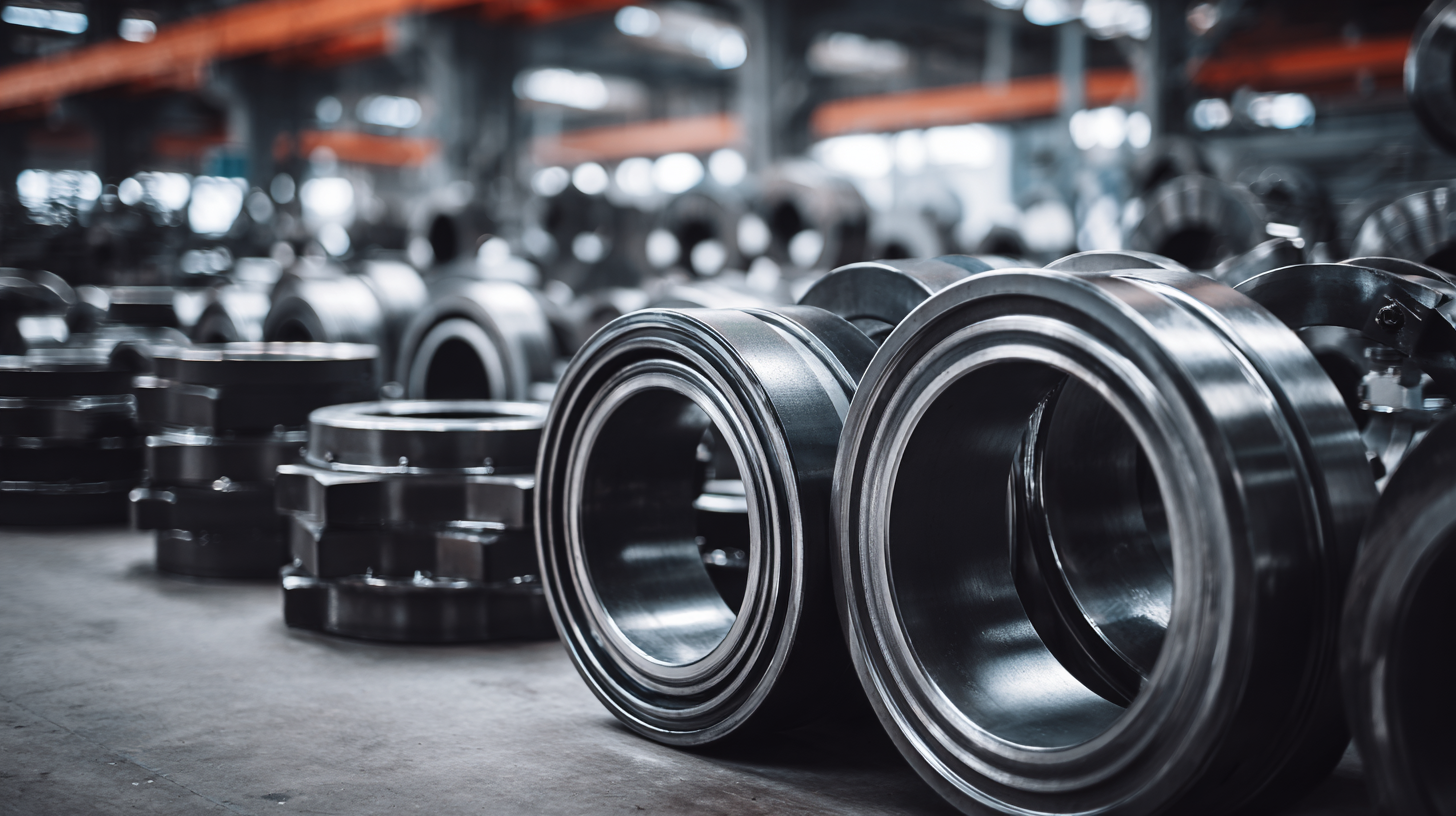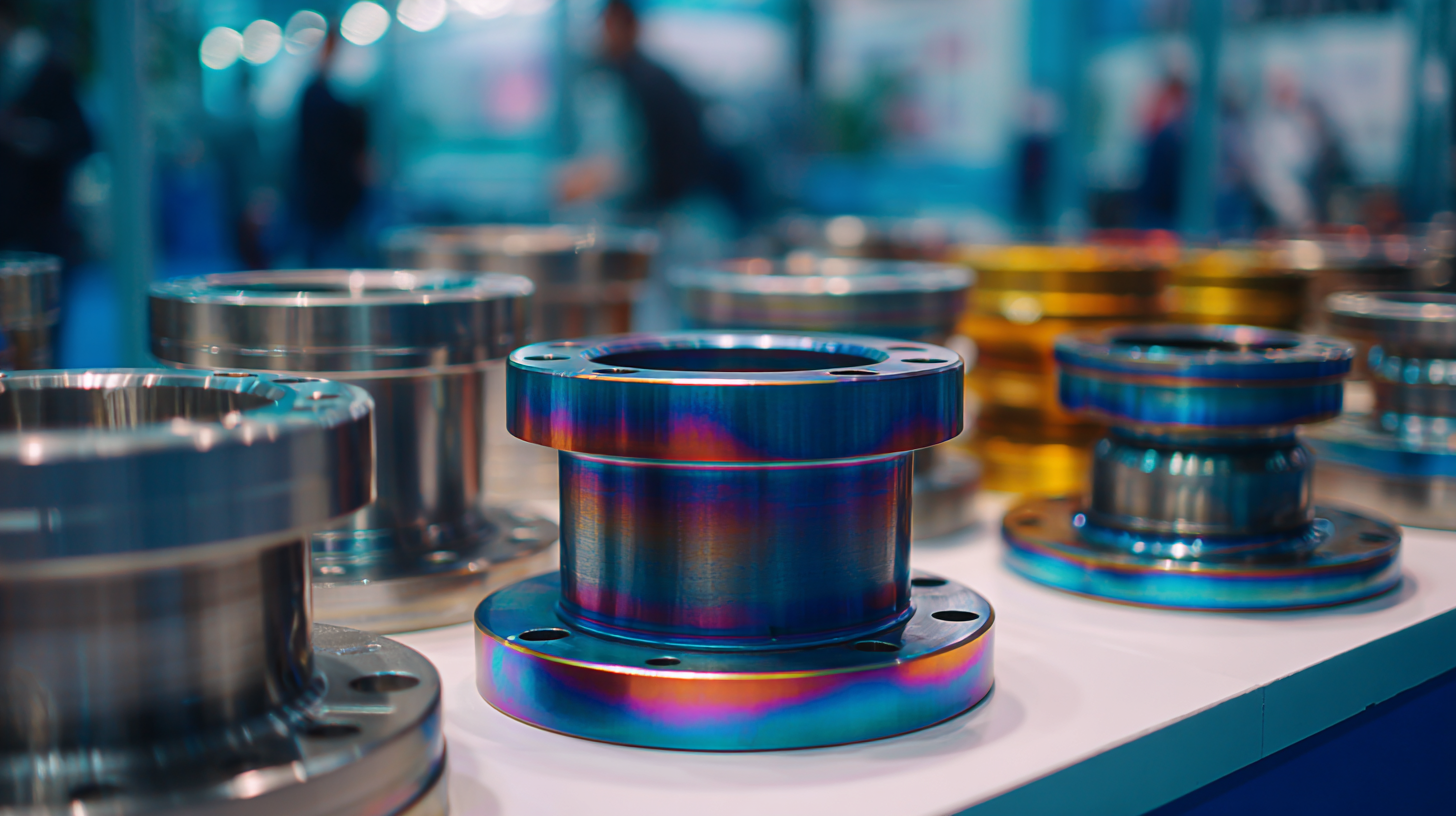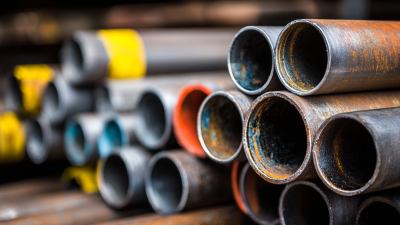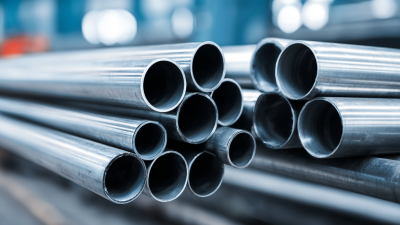Discovering Market Trends for Pipe Flanges at the 138th Canton Fair in 2025
As industries continue to evolve, the demand for high-quality components like pipe flanges remains critical in various sectors, including construction, oil and gas, and manufacturing.
The 138th Canton Fair in 2025 is poised to be a pivotal event for businesses and professionals seeking to explore the latest market trends surrounding pipe flanges.
This internationally renowned fair offers a unique platform for manufacturers, suppliers, and buyers to connect and showcase advancements in flange technology, innovative designs, and industry standards.
 Attendees will have the opportunity to engage with experts, discover emerging trends, and gain insights into the future of pipe flanges. As the fair approaches, it becomes imperative to analyze the market dynamics and changes in consumer preferences that could shape the landscape for pipe flanges, ensuring that stakeholders are well-prepared to meet the challenges and opportunities that lie ahead.
Attendees will have the opportunity to engage with experts, discover emerging trends, and gain insights into the future of pipe flanges. As the fair approaches, it becomes imperative to analyze the market dynamics and changes in consumer preferences that could shape the landscape for pipe flanges, ensuring that stakeholders are well-prepared to meet the challenges and opportunities that lie ahead.
Emerging Trends in Pipe Flange Designs Showcased at the 138th Canton Fair
The 138th Canton Fair in 2025 has become a pivotal event for showcasing emerging trends in pipe flange designs, reflecting rapid advancements in the industry. According to a recent report from Research and Markets, the global pipe flange market is expected to grow by over 4% annually, driven by increasing demand in the oil and gas, and construction sectors. This upward trajectory highlights how manufacturers are innovating to improve both the functionality and aesthetics of pipe flanges, with a particular focus on lightweight materials and corrosion-resistant coatings.
One of the key trends observed at the fair was the integration of advanced engineering methodologies in flange design. Companies are now utilizing
computer-aided design (CAD) and
finite element analysis (FEA) to enhance performance and ensure safety compliance. A study by
Mordor Intelligence also pointed out that the adoption of
sustainable manufacturing processes has gained traction, with a notable increase in flanges made from
recycled materials. This shift not only addresses environmental concerns but also aligns with industry regulations aimed at reducing carbon footprints. The innovations displayed at the Canton Fair signal a significant transformation in the pipe flange market, emphasizing both
efficiency and
sustainability for future applications.
Innovative Materials and Technologies for Pipe Flanges in 2025
As the 138th Canton Fair approaches in 2025, the focus on innovative materials and technologies for pipe flanges highlights the evolving landscape of the thermoplastic pipe market. With a valuation projected at $4.31 billion, the demand for advanced solutions in piping systems is on the rise. The introduction of cutting-edge materials is essential in addressing the challenges of durability and reliability, particularly under high temperature and pressure conditions.
In this context, new offerings like advanced polypropylene solutions are set to transform the industry, enhancing performance and expanding application possibilities. Moreover, the upcoming events, including the CLNB 2025 New Energy Industry Expo, promise to showcase a range of technological advancements that will redefine standards in the piping sector. As stakeholders gather to explore these innovations, the strategic implications for market trends and business opportunities become increasingly significant.
Market Trends for Pipe Flanges at the 138th Canton Fair in 2025
The chart above illustrates the market demand for various materials used in pipe flanges as seen at the 138th Canton Fair in 2025. Carbon steel remains the dominant material with 45% of the market demand, followed by stainless steel at 35%. Alloy steel, plastic, and other materials make up the remaining market share.
Market Demand Insights: Key Drivers for Pipe Flanges in Global Trade
The 138th Canton Fair in 2025 is set to unveil exciting market trends for pipe flanges, with a spotlight on market demand insights and the key drivers propelling global trade in this sector. As industries continue to expand and evolve, understanding the factors driving the demand for pipe flanges becomes essential for stakeholders aiming to stay competitive.
One major driver is the increasing demand for infrastructure development worldwide. As countries invest in their infrastructure, the need for reliable and durable piping solutions becomes critical. Additionally, advancements in manufacturing technologies are enabling the production of high-quality flanges that meet rigorous safety standards, further boosting their market appeal.
Tips: When navigating this evolving market, businesses should focus on building strong networks with suppliers and customers, as relationships can significantly influence market access and opportunities. Additionally, keeping an eye on regulatory changes can provide strategic advantages, positioning companies to adapt quickly to new market requirements. Engaging in continuous market research will also help players anticipate trends and adjust their strategies accordingly.
Discovering Market Trends for Pipe Flanges at the 138th Canton Fair in 2025 - Market Demand Insights: Key Drivers for Pipe Flanges in Global Trade
| Region |
Market Size (USD Million) |
Growth Rate (%) |
Major Applications |
Key Drivers |
| North America |
350 |
5.0 |
Oil & Gas, Construction |
Infrastructure Development |
| Europe |
300 |
4.5 |
Chemical Processing, Shipbuilding |
Energy Transition Policies |
| Asia-Pacific |
500 |
6.2 |
Power Generation, Water Supply |
Urbanization, Industrialization |
| Latin America |
100 |
3.5 |
Mining, Agriculture |
Mining Activities |
| Middle East & Africa |
150 |
4.0 |
Oil & Gas, Construction |
Oil Prices, Infrastructure Investment |
Networking Opportunities for Pipe Flange Manufacturers at the Canton Fair
The upcoming 138th Canton Fair in 2025 presents a significant networking opportunity for pipe flange manufacturers. As companies from various regions converge to explore new markets, the fair serves as a vital platform for establishing connections and collaborations. The participation of 19 Macao companies in previous sessions highlights the importance of such events in fostering international trade relationships. Manufacturers can showcase their innovations and capabilities, enabling them to tap into the growing demand for pipe flanges across various industries.

Moreover, the Canton Fair is not just about showcasing products but also about engaging with potential partners and clients. The thriving environment of the fair encourages networking, allowing manufacturers to exchange insights and learn from industry leaders. As policymakers and entrepreneurs from countries like Kenya seek to strengthen trade ties with China, flanges manufacturers can leverage these connections to expand their influence in international markets. This creates a fertile ground for business growth and diversification, making the Canton Fair an essential event for anyone in the industry.
Sustainability in Pipe Flange Production: Trends and Challenges Ahead
At the 138th Canton Fair in 2025, the spotlight will be on sustainability in pipe flange production, highlighting the growing need for environmentally responsible manufacturing practices. According to a recent report by MarketsandMarkets, the global market for sustainable industrial products is projected to reach $1 trillion by 2025, with the metal fabrication sector significantly contributing to this growth. Pipe flange manufacturers are increasingly adopting eco-friendly materials and processes to meet consumer demands while reducing their carbon footprint.
The challenges of implementing sustainable practices in pipe flange production are multifaceted. A survey from the International Metalworkers' Federation indicated that over 60% of manufacturers face difficulties in sourcing sustainable raw materials. Additionally, the need for investment in new technologies, such as energy-efficient machinery and waste reduction systems, poses a significant financial hurdle. However, adopting these innovations not only aligns with regulatory standards but also enhances competitiveness in an evolving marketplace. Companies that prioritize sustainability can expect to attract a new wave of clientele that values environmental stewardship alongside quality and performance.

Home
About Us
Products
Carbon & Carbon Alloy Steel
Stainless Steel
Copper & Nickel Alloy
Heat Efficiency Tubes
Pipe Fittings
Pipe Flanges
Gasket, Stud Bolt &Nut
Industrial Valves
Tech & Service
Blog
Contact Us


 Attendees will have the opportunity to engage with experts, discover emerging trends, and gain insights into the future of pipe flanges. As the fair approaches, it becomes imperative to analyze the market dynamics and changes in consumer preferences that could shape the landscape for pipe flanges, ensuring that stakeholders are well-prepared to meet the challenges and opportunities that lie ahead.
Attendees will have the opportunity to engage with experts, discover emerging trends, and gain insights into the future of pipe flanges. As the fair approaches, it becomes imperative to analyze the market dynamics and changes in consumer preferences that could shape the landscape for pipe flanges, ensuring that stakeholders are well-prepared to meet the challenges and opportunities that lie ahead.







